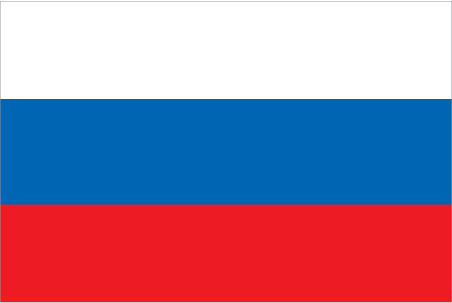To help inspire or plan your trip to Russia, some of its major attractions
for travellers are shown below, including some of the best natural, historical, cultural and adventure sites in the country.
These include all of UNESCO World Heritage Sites for Russia which represent the best
of the world's cultural and natural heritage.
Click on the icons below to focus on specific types of features
(click again to return to all).
|
|
|
|
|
|
|
|
|
|
|
|
 |
|---|---|---|---|---|---|---|---|---|---|---|---|
| Natural | History | Wildlife | Trekking | Cities | Religious Monument | Boat Journey | Rail Journey | Diving | Cultural | Adrenaline | UNESCO WHS |
Historical attractions in Russia
| St Petersburg | |
|---|---|
St. Petersburg is one of the most beautiful and dramatic cities in the world and a perfect start or finish point for the world's greatest rail journey. Design and construction of the city began in 1703 when Peter the Great sought to create a new European style capital by the Baltic Coast. Over the course of the century many architects worked to create a grand city of palaces and cathedrals over a network of canals and some 400 bridges, earning it the title 'Venice of the North'. Of its numerous highlights, perhaps the most impressive is the Hermitage art museum, housed in the enormous and spectacular Winter Palace. The 1,000 rooms of the palace are as impressive as the art they house, with a dizzying 150,000 items on display. St. Isaac's Cathedral offers superb views of the city from its colonnade while Nevsky Prospekt, the city's main thoroughfare, has many historic buildings and interesting shops. Outside the city, Peter the Great's summer palace Petrodvorets, built to rival Versailles, displays the opulence of the imperial court. St. Petersburg has long been the home of artists, intellectuals and liberal thinkers. It was the site of revolution in 1917 and today is the centre of Russia's alternative culture. UNESCO World Heritage Site: Historic Centre of Saint Petersburg and Related Groups of Monuments | |
| Moscow | |
|---|---|
Russia's political and spiritual capital is a vast city with a rich cultural and historical legacy. An exploration of Moscow must begin at the famous Red Square, home to Lenin's mausoleum and the unmistakeable and beautiful colourful onion domes of St. Basil's Cathedral, Ivan the Terrible's 16th century church. Moscow's Kremlin is a must-see - this fortress was built between the 14th and 17th centuries and contains cathedrals, palaces and museums like the Armoury, a collection of the Tsar's treasures including the famous Faberge Eggs. The Moscow metro is not only useful for getting around the city but many of the ornately decorated stations are attractions in themselves. The Weekend Market in Izmaylovsky Park is excellent for souvenir shopping, while for a more upmarket option, try the GUM department store. The cultural options at night are endless - from clubs to the circus and opera or ballet, including the world famous Bolshoi Theatre. UNESCO World Heritage Site: Kremlin and Red Square, Moscow | |
| Vladimir and Suzdal | |
|---|---|
The town of Vladimir is close to Moscow and is one of the 'Golden Ring' of ancient Russian capitals. There are a number of important historical monuments here, including the Cathedral of the Assumption (1158), the Golden Gate (1164) and the Cathedral of St. Demetrius (1194) with its 1,000 stone carvings of King David. The nearby Suzdal is a beautiful small town filled with cathedrals and churches and old wooden buildings along its narrow streets. UNESCO World Heritage Site: White Monuments of Vladimir and Suzdal | |
| Kazan | |
|---|---|
Kazan is the capital of Tatarstan and is most famous for the Kazan Kremlin complex of buildings. This dates from the Muslim period of the Kazan Khanate and was conquered by Ivan the Terrible in 1552. The historic buildings in the Kremlin today date from the 16th to the 19th centuries and it is the only surviving Tatar fortress in Russia. An important place of pilgrimage, this is one of the less visited stops of the Trans-Siberian journey, but the town is an interesting melting pot of cultures and the view of the Kremlin by night is spectacular. UNESCO World Heritage Site: Historic and Architectural Complex of the Kazan Kremlin | |
| Ekaterinburg | |
|---|---|
Ekaterinburg is the capital city of the Urals, founded by Peter the Great in 1723 as a gateway to the mineral riches of the Urals and now a major staging post on the Trans-Siberian. It is most famous for being the site of the murder of the last Tsar, Nicholas II, and the Romanovs in 1918. An impressive new cathedral, the Cathedral of Spilt Blood, has been built on the site where they lived their last months. In the forest where they were buried, a monastery and six traditional wooden churches have been built around the graves, now a Russian Orthodox pilgrimage site. Aside from all that history, Ekaterinburg is a laid back city with a good cafe culture that makes an ideal spot to break the Moscow to Irkutsk leg of the journey. Also, close to Ekaterinburg lies a white obelisk monument which marks the border between Europe and Asia, giving you a chance to stand on two continents simultaneously. | |
| Omsk | |
|---|---|
Omsk is Siberia's second city and was founded in 1716 as a place of exile for criminals and political prisoners. Its most famous resident of that time was the writer Fyodor Dostoyevsky who spent four years of hard labour here and recounted his experiences in his book 'Buried Alive in Siberia'. You can learn about this history at the Literature Museum and the History Museum. | |




